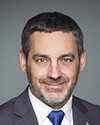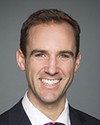Good morning, Madam Chair and members of the committee.
Thank you very much for the invitation to appear before the committee today to talk about Telefilm Canada. I'd like to focus my comments on the following three areas: first, a brief overview on Telefilm Canada's role and support to the Canadian audiovisual industry; second, our successes and our challenges; and third, our priorities for the next three years.
In 2014-15, we supported the production and marketing of 87 feature films and the development of more than 300 projects, while also helping to promote our Canadian talent in Canada and international festivals.
Building on our near 50 years of investment, Telefilm Canada, together with its partners, has helped shape a landscape conducive to creativity. We have now reached a maturity that enables us to produce and export works of excellent quality. Canadian and foreign film and television production volume in 2014-15 reached $7 billion and accounted for over 148,000 full-time jobs. Film production, for its part, amounted to $349 million and accounted for 7,300 full-time jobs.
What a year this has been for Canada, starting with 21 Canadians behind various Oscar nominations and two Canadian co-productions—in fact, Canada–Ireland co-productions—Room and Brooklyn, receiving best picture nominations—a first. Hosted by Minister Joly, the next movie night on the Hill, on May 3, features the movie Room, and of course you are all invited.
It continues with Cannes. Xavier Dolan's Juste la fin du monde is in the running for the top prize, the Palme d'Or. Just to remind everyone, Cannes receives close to 2,000 films, so having one Canadian in the lineup is amazing. It's the fifth time that Xavier Dolan has been selected for Cannes. In the directors' fortnight section, there are Kim Nguyen's Two Lovers and a Bear, and Nathan Morlando's Mean Dreams. Finally, François Jaro's short film, Oh What a Wonderful Feeling, is part of the critics' week.
The New York Times noted our industry's success in an article, saying that “Canada is on a hot streak, its movies regularly winning prizes....”
Despite these successes, we all face challenges, but our challenges are also opportunities.
First, we need to promote the excellence of Canadian content by conducting effective promotion of the industry and its successes directly to consumers. Second, we need to foster more groundbreaking marketing practices by connecting with a large number of viewers. Third, we need to make decisions supported by meaningful metrics; it's vital that we make informed decisions based on value-added research. Fourth, we need to help the industry diversify its sources of funding by attracting new funding partners, which is the main objective of our talent fund, developed to empower corporations and individuals to support Canadian films through charitable donations and partnerships.
As the committee is aware, Canada virtually invented official treaty co-production, and we're happy to report that Canada has been invited to join Eurimages, the 25-million-euro cultural support fund of the Council of Europe. Canada would be the first non-European member. This opportunity will provide the industry with another excellent instrument to access international funding and to better export our cinema.
Finally, we continually strive to achieve organizational excellence, and Telefilm will continue to maintain its low administrative expenses, not exceeding 6%.
Telefilm's vision for the future is clear: we want Canadian creative content to be accessible and to be viewed everywhere. For nearly 26 years at Telefilm Canada, I have believed in Telefilm's mission more and more each day. I am sentimental and I totally acknowledge that. I am moved by the talent behind the productions we support and truly amazed at the creativity, imagination and performance of our nation's directors, writers, actors and film crews. Each time the magic is created on screen, I experience the same emotion I had as a child when watching The Count of Monte Cristo with my grandmother. I am proud of the work we have accomplished.
In 2017, Telefilm will celebrate its 50th anniversary at the same time as Canada turns 150. The industry we have been asked to develop and promote not only makes a contribution to Canada's economic well-being, but also shines the spotlight on our country throughout the world. Thank you to Michael Spencer—the first executive director of what used to be called the Canadian Film Development Corporation—Gratien Gélinas, and to all the employees who have worked at Telefilm Canada over the past 50 years.
As a final word, I have a dream to share because I am not just sentimental but a perpetual dreamer, as well. I dream of the day when all Canadians will be just as proud of the success of David Gross and Emma Donoghue—respective producer and writer of Room—as they are of the accomplishments of P.K. Subban and the Dufour-Lapointe sisters.
I thank you and I welcome your questions.




